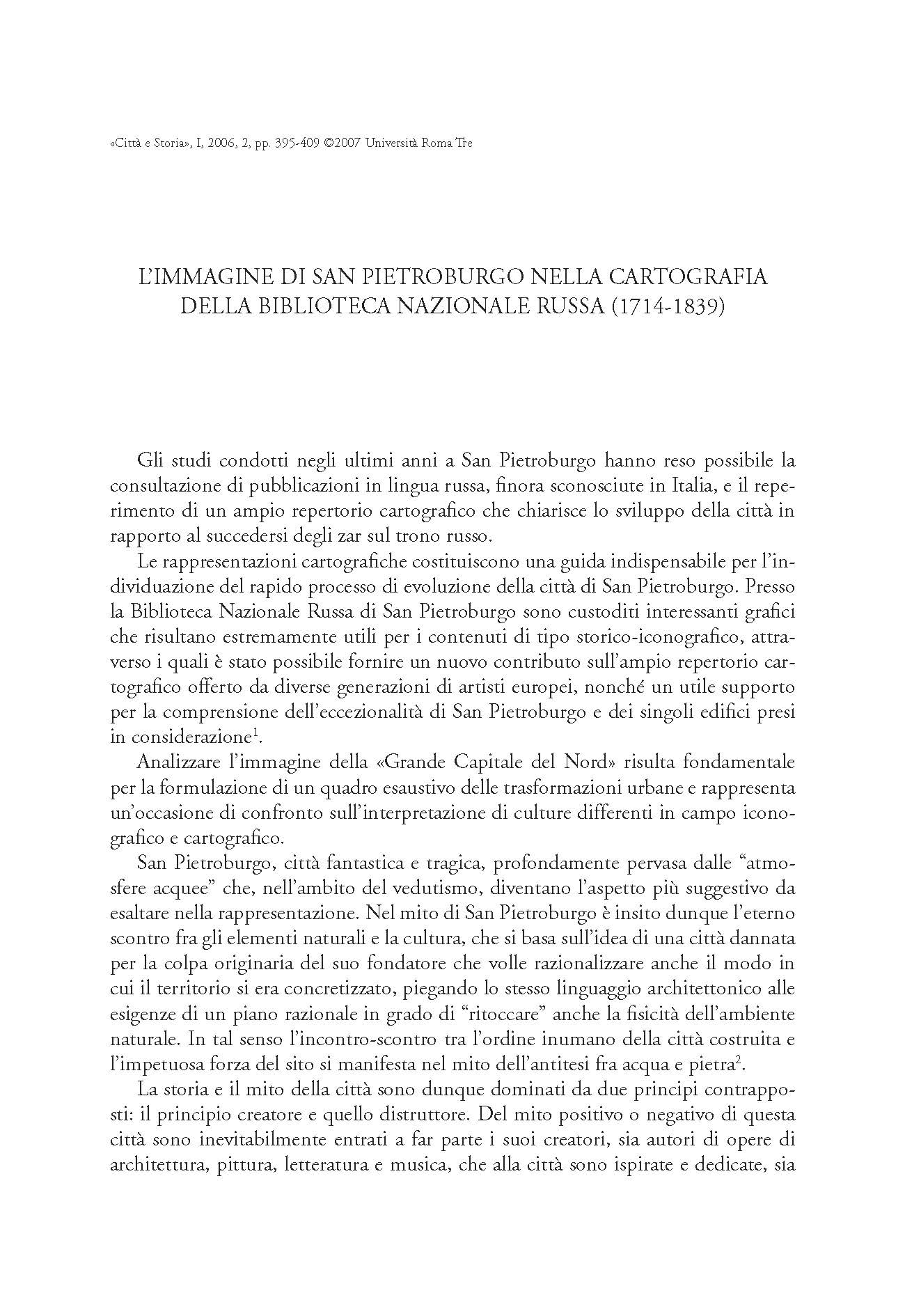L’immagine di San Pietroburgo nella cartografia della Biblioteca Nazionale Russa (1714-1839)
6,00 €
Interesting depictions of the “Capital of the North” from the early years of its foundation by Peter the Great in 1703 are housed in the Russian National Library. A careful study of these representations, extremely stimulating for their historic and iconographic content, has made it possible to furnish a detailed contribution to the vast cartographic repertory by different generations of European artists. These graphic renditions also provide a basis for the understanding of the exceptionality of both St. Petersburg’s urban plan and of those individual buildings depicted. A detailed study of seven watercolor painted lithographs by I. Agafonov portraying the city in significant phases of its development – during the reigns of the czar Peter the Great, Anna Ivanovna, Catherine II, Alexander I and Nicholas I – has made it possible to outline the framework of the urban development of this absolutist court between the eighteenth and nineteenth century.
Interesting depictions of the “Capital of the North” from the early years of its foundation by Peter the Great in 1703 are housed in the Russian National Library. A careful study of these representations, extremely stimulating for their historic and iconographic content, has made it possible to furnish a detailed contribution to the vast cartographic repertory by different generations of European artists. These graphic renditions also provide a basis for the understanding of the exceptionality of both St. Petersburg’s urban plan and of those individual buildings depicted. A detailed study of seven watercolor painted lithographs by I. Agafonov portraying the city in significant phases of its development – during the reigns of the czar Peter the Great, Anna Ivanovna, Catherine II, Alexander I and Nicholas I – has made it possible to outline the framework of the urban development of this absolutist court between the eighteenth and nineteenth century.

